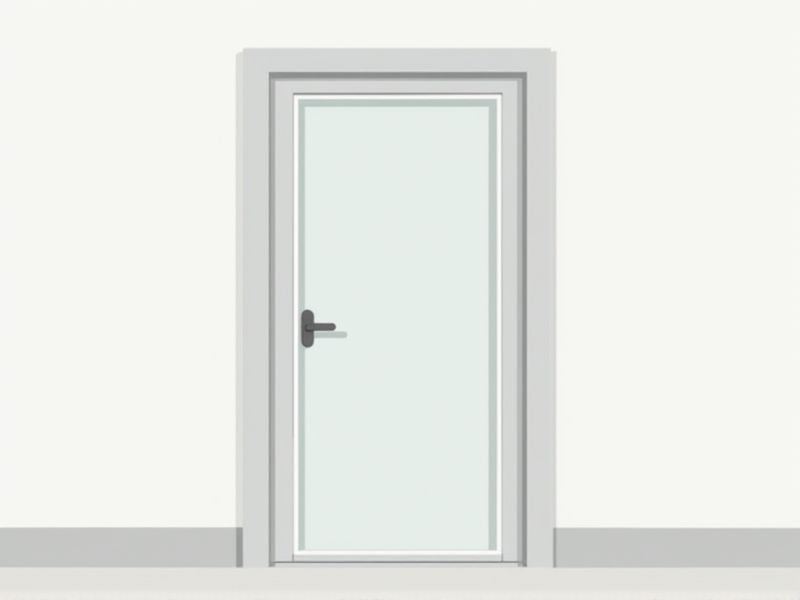
When selecting a screen door for your home, knowing the standard dimensions can help streamline your search and installation process. Typically, standard screen doors are 36 inches wide by 80 inches tall, which fits most exterior door frames in the United States. However, some doors may also come in 32-inch or 34-inch widths to accommodate different frame sizes, so it's important to measure your doorway before purchasing. If your opening is non-standard, many retailers also offer custom screen doors to ensure a proper fit and effective protection against insects.
Height
The standard height for a screen door typically measures 80 inches, which is suitable for most residential entryways. This height accommodates a variety of door frames, ensuring that the screen door fits seamlessly without adjustments. For specialized installations, the height can vary slightly, ranging from 76 inches to 84 inches depending on architectural needs. Always check your doorway dimensions to guarantee a proper fit and optimal performance of your screen door.
Width
The standard width for a screen door typically ranges from 32 inches to 36 inches, making it suitable for most entryways. A width of 36 inches is ideal for accessibility, allowing easy passage for individuals with mobility devices. If you're considering a custom installation, measuring the frame accurately ensures a perfect fit, enhancing both functionality and aesthetics. Remember, the screen material and frame thickness can also affect the overall installation process, so choose wisely to complement your home's design.
Thickness
The standard thickness of screen doors typically ranges from 0.25 to 0.5 inches, ensuring durability and stability. A thicker screen door can provide better resistance to impacts and weather elements, which is essential for longevity in various climates. Most manufacturers emphasize using high-quality materials, such as aluminum or fiberglass, that support sturdiness while maintaining a lightweight design. Selecting a screen door with appropriate thickness can significantly enhance your home's energy efficiency by minimizing air leaks.
Mesh Size
The mesh size of a standard screen door typically ranges from 20 x 20 to 18 x 16 strands per inch, which effectively blocks insects while allowing airflow. Smaller mesh sizes, such as 20 x 20, are optimal for fine mesh applications, providing enhanced protection against tiny pests like gnats and no-see-ums. Conversely, an 18 x 16 mesh size is ideal for larger insects, balancing visibility and airflow. When selecting a screen door, consider the mesh size to ensure it meets your specific needs for pest control and ventilation.
Frame Material
When selecting a screen door, the frame material is crucial for durability and performance. Aluminum frames, known for their lightweight and rust-resistant properties, are ideal for areas with high humidity or coastal environments. In contrast, vinyl frames offer superior insulation and are typically more energy-efficient, making them an excellent choice for temperature-sensitive regions. If you prefer a more traditional look, consider wood frames, which provide aesthetic appeal but require regular maintenance to prevent warping and damage.
Door Style
The standard screen door typically features a swinging or sliding door style, providing flexibility for various home designs. A common dimension for these screen doors is 32 to 36 inches in width, making them suitable for most openings. Made from materials such as aluminum or fiberglass, these doors ensure durability while allowing for optimal airflow and visibility. You can enhance your home's aesthetic by choosing from diverse color and finish options that complement your existing decor.
Handle Placement
The standard for screen door handle placement typically requires an optimal height of 36 inches from the ground, ensuring accessibility for most users. For sliding screen doors, handles should be aligned with the main door handle, providing a cohesive look and easy operation. It's also important to consider placement that accommodates both left- and right-handed users; dual-sided designs are often preferred. In addition, ensure that the handle is at a distance of about 6 to 8 inches from the edge of the door, minimizing the risk of accidental damage and ensuring ease of grip.
Mounting Type
The mounting type of a screen door significantly influences its functionality and ease of installation. Conventional options include hinged, sliding, and retractable designs, with hinged screens typically offering straightforward installation for entryways. In contrast, sliding screen doors are ideal for large openings, maximizing ventilation while maintaining accessibility. Retractable models provide versatility by allowing you to maintain your view when the screen is not in use, creating a seamless transition between indoor and outdoor spaces.
Color Options
Screen doors are available in a variety of color options, allowing you to enhance your home's aesthetic. Popular choices include classic white, elegant black, and natural wood tones, accommodating diverse decor styles. Customization options enable you to select from over 20 colors to match your preference perfectly. This flexibility not only improves your home's curb appeal but also adds a personal touch to your space.
Weather Resistance
A high-quality screen door offers exceptional weather resistance, ensuring durability in harsh conditions. Look for models with reinforced frames made from materials like fiberglass or aluminum, which can withstand extreme temperatures ranging from -40degF to 120degF. Watertight seals and UV-resistant mesh not only prevent water intrusion but also maintain performance under sunlight exposure, reducing fading and wear over time. Your investment in a weather-resistant screen door can enhance indoor comfort while protecting your home from pests and outdoor elements.
